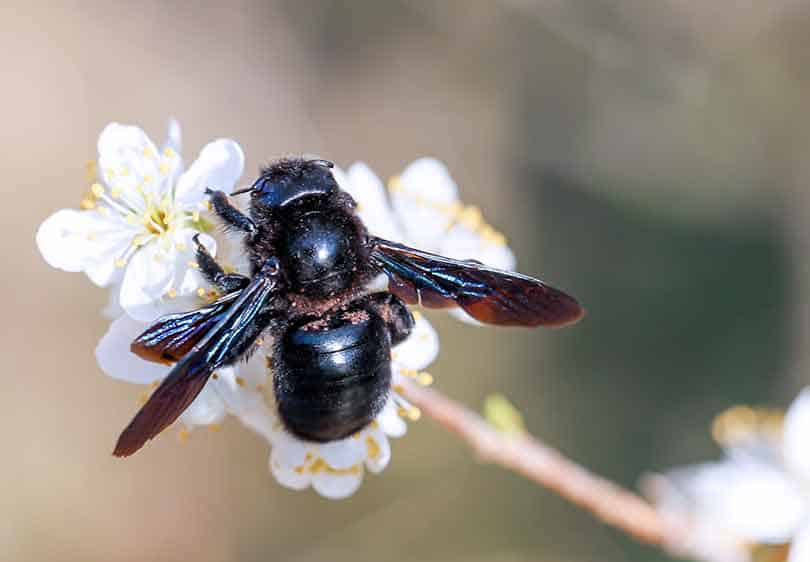Locating Effective Solutions in Vole Control Utah
Wiki Article
Comprehensive Insect Control Provider to Battle Vole Infestations
By employing a mix of recognition, environment, trapping, and exclusion alteration strategies, expert pest control services can use a tailored solution to deal with vole infestations. The vital lies in carrying out a well-rounded plan that not just removes existing voles but likewise develops long-term control actions to safeguard versus future invasions.Vole Recognition and Examination
Voles, tiny rodents resembling computer mice yet with shorter tails, are commonly located in lawns and gardens, making accurate recognition crucial for efficient bug control actions. These parasites can create significant damages to plants and plants, making timely activity important in alleviating potential losses. When inspecting for voles, seek their particular paths, burrow openings, and gnawed plant roots. vole control service. Vole paths are generally located on the surface of the ground and are created as they commute between their burrows and food sources. Delve openings are tiny, regarding 1-2 inches in diameter, and cause below ground passages where voles nest and look for shelter. Gnawed plant roots are one more sign of vole activity, indicating their visibility and possible damages to plants. By properly identifying these signs, bug control professionals can customize their methods to efficiently handle vole problems and secure yards and backyards from more harm.
Capturing and Elimination Strategies
Effective bug control methods for taking care of vole invasions commonly include employing specialized capturing and removal strategies. Trapping is a widely made use of method to capture voles and transfer them far from residential or commercial properties. Live traps, such as box catches or tube traps, are frequently utilized as they allow for the safe capture of voles without creating damage. These traps are strategically placed in vole runways or near burrow entryways to enhance the possibilities of effective capture.When establishing traps, it is critical to ensure they are placed correctly and baited with vole-preferred food resources like peanut butter, seeds, or fruits. Frequently examining the traps is essential to quickly eliminate captured voles and protect against distress or harm to the animals. When caught, voles should be relocated to ideal environments far from human homes to stay clear of re-infestation.
Additionally, exclusion methods, such as installing obstacles or fence underground, can aid discourage voles from accessing particular areas. Proper disposal of caught voles and consistent monitoring of vole task are essential components of a reliable trapping and removal strategy in vole problem management.
Exemption and Barrier Approaches

By addressing these vulnerabilities and implementing targeted exemption and obstacle actions, property owners can considerably decrease the threat of vole invasions. Inevitably, a combination of capturing, elimination, and proactive exemption actions can assist effectively manage vole populaces and protect buildings from problems.
Habitat Modification and Prevention
To mitigate vole invasions, environment modification and avoidance vole control service strategies focus on modifying the atmosphere to inhibit vole habitation. One effective method is reducing the availability of food resources by maintaining yard cut short, eliminating weeds and debris, and maintaining a clean lawn. Voles are brought in to locations with dense plants and clutter, so producing open areas can help deter them from clearing up in the location. In addition, decreasing excess dampness by fixing dripping pipes, making sure correct water drainage, and getting rid of standing water can make the atmosphere much less friendly for voles.Integrating barriers like gravel boundaries or cord mesh underground can also prevent voles from burrowing right into gardens or lawns. These physical barriers disrupt their capability to passage and access preferred areas. Planting vole-resistant plants and utilizing vole-repellent strategies such as castor oil-based deterrents can additionally discourage vole task. By applying these environment alterations and prevention steps, homeowner can proactively reduce the risk of vole infestations and secure their outside areas from damage. best vole pest control.
Monitoring and Follow-Up Approaches

Follow-up techniques involve taking another look at the treated locations to look for any signs of vole activity. Keeping track of terminals, traps, and aesthetic inspections are generally used methods to review the success of the insect control procedures. By frequently examining these locations, bug control professionals can promptly recognize any type of rebirth of vole task and take proactive steps to attend to the concern before it rises.
Additionally, documenting the outcomes of monitoring and follow-up activities is essential for tracking the development of vole invasion control in time. These records aid in identifying fads, assessing the efficiency of various control approaches, and making informed choices for future bug monitoring methods. Routine follow-up treatments not just assist in avoiding vole re-infestations yet additionally contribute to the total success of bug control initiatives.
Conclusion
In conclusion, extensive parasite control solutions are essential for effectively combating vole invasions. By examining and identifying vole populaces, carrying out capturing and elimination strategies, using exclusion and barrier approaches, modifying habitats, and carrying out surveillance and follow-up techniques, building owners can successfully manage and avoid future invasions. It is important to deal with vole infestations immediately to prevent damages to home and possible wellness threats.
By utilizing a mix of identification, exemption, trapping, and environment modification methods, expert bug control services can supply a tailored option to fight vole problems (utah vole control). By precisely recognizing these signs, insect control professionals can customize their approaches to successfully manage vole infestations and safeguard gardens and lawns from additional damage
Efficient parasite control techniques for handling vole infestations usually entail using specialized trapping and elimination techniques.To mitigate vole invasions, environment alteration and avoidance methods concentrate on changing the setting to inhibit vole habitation.Regular surveillance and follow-up treatments are important in keeping vole infestation control procedures and guaranteeing long-term success in bug administration.
Report this wiki page